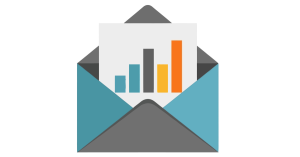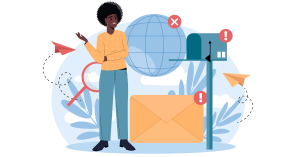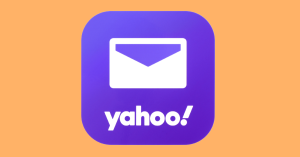Email has evolved dramatically in recent years. Email inboxes are no longer the cluttered environments that they used to be, stuffed full of irrelevant and unnecessary emails. Messages are now meticulously sorted into different categories based on their purpose. Essential emails, such as personal messages from friends, family, and colleagues and crucial transactional emails from businesses, typically land in the primary inbox folder. Meanwhile, marketing campaigns and newsletters are directed to the promotions tab, while social media notifications have their own dedicated space.
Initially, many marketers were wary of email providers dictating where messages should appear. However, it’s now widely accepted that these changes help users prioritize and engage with their emails more effectively. With everything neatly organized, inboxes are easier to manage, and important messages, including well-crafted, relevant marketing emails, are less likely to be overlooked.
While sorting emails by type is now considered a good thing, there’s one place no email should ever end up: the spam folder. Emails that are marked as spam not only fail to reach their intended recipients but also damage the sender’s reputation and can lead to deliverability issues in the future. In this article, we’ll explore why emails get marked as spam and share essential deliverability best practices to help keep your messages where they belong.
How Do Spam Filters Work?
Email spam filters analyze incoming messages to determine whether they should be delivered to the primary inbox, sorted into a specific folder (like promotions or social media), or sent straight to the spam folder. They rely on a mix of sender reputation analysis, authentication checks, and content scanning to make this decision.
Reputation and Authentication
The sender’s reputation is assessed based on past engagement levels, complaint rates, and whether their domain or IP has a history of sending spam. If an email lacks authentication through SPF, DKIM, or DMARC protocols which are designed to verify legitimate senders, it’s more likely to be blocked or flagged.
Email Content
Spam filters scan the email’s content, looking for red flags such as excessive capitalization, misleading subject lines, and overuse of spammy phrases like “Free money” or “Act now!” Suspicious attachments and an imbalance of images to text can also trigger spam detection.
User Behavior
User behavior influences filtering decisions. Emails frequently opened, replied to, or moved to the primary inbox gain credibility, while those ignored or marked as spam damage the sender’s reputation. Advanced spam filters also use AI and machine learning to adapt to new threats, ensuring unwanted emails are detected more effectively over time.
Email Best Practices to Avoid The Spam Folder
To keep your emails out of the spam folder and ensure they land in the inbox, you’ll need to closely follow these best practices:
1. Authenticate Your Emails
Email authentication helps prove to inbox providers that you’re a legitimate sender and not a spammer. Implement SPF (Sender Policy Framework) to verify your sending server, DKIM (DomainKeys Identified Mail) to confirm your email hasn’t been altered in transit, and DMARC (Domain-based Message Authentication, Reporting & Conformance) to prevent spoofing and phishing attempts. Without these protocols, your emails will likely be rejected and marked as spam.
2. Maintain a Good Sender Reputation
Every email sender has a reputation score based on factors like email engagement, spam complaints, bounce rates, and sending history. High complaint rates or sending from a blacklisted IP can seriously harm deliverability. Keep your sender reputation strong by using a dedicated domain, sending consistently, and ensuring your emails are well-received by your audience.
3. Get Permission and Keep Your Lists Clean
Sending emails to people who didn’t opt-in is a fast track to the spam folder. Double opt-in subscription practices are recommended to confirm subscriber interest and prevent fake sign-ups. It’s also important to regularly clean your email list by removing inactive users, bounced addresses, and potential spam traps to improve engagement rates and avoid being flagged as a spammer.
4. Avoid Spam Trigger Words and Formatting Issues
Spam filters scan email content for suspicious words and formatting. Avoid overly promotional language like “free,” “winner,” “guaranteed,” or “act now”—especially in subject lines. Overusing capital letters, excessive punctuation (!!!), and large images with little supporting text can also raise red flags. Instead, craft natural, engaging content that resonates with your audience.
5. Send Relevant, Engaging Content
Email providers track how recipients interact with your emails. If people open, click, and reply, your emails are seen as valuable. If they ignore or delete them, your reputation suffers. Make sure your content is personalized, useful, and aligned with your audience’s interests to encourage engagement. Ask questions, provide valuable insights, and use segmentation to send targeted messages rather than generic blasts.
6. Optimize Email Frequency and Consistency
Sending too many emails can annoy subscribers, leading to unsubscribes and spam complaints, while sending too few can result in low engagement. Find a balance that suits your audience by testing different sending frequencies and monitoring open and click rates. Because consistency is key, you should train your audience to expect your emails at regular intervals.
7. Provide an Easy Unsubscribe Option
A visible and simple unsubscribe link isn’t just a legal requirement (e.g., under GDPR and CAN-SPAM laws)—it also helps maintain your sender reputation. If people find it difficult to opt-out, they may mark your email as spam instead, which damages your deliverability. Keeping the unsubscribe process smooth protects your long-term email performance.
Learn More
The email marketing experts at emfluence are committed to helping marketers optimize their email deliverability and avoid the spam folder by deploying best-in-bred technical solutions and email marketing best practices. To learn more, request a demo of the emfluence Marketing Platform or arrange a call with an advisor here: expert@emfluence.com.


